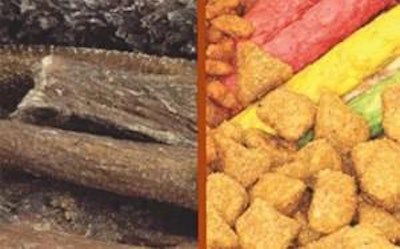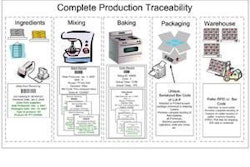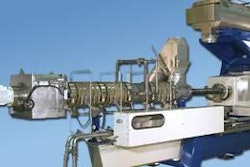
Pet owners have started a dull roar of demand for a return to specialization and localization of the ingredients being used in their pet's food and treats. Why? There are several factors. Their order of importance depends on the individual consumer.
-
Health. In surveys, pet parents cite freshness as the top concern about petfood. According to a survey by Market Reports, they also equate freshness with health. And when they know their pet's food came from someplace nearby, they feel it is fresher, healthier and safer for them to eat.
-
Altruism. People believe they are helping out their local economy, but more especially farmers, when they "buy local." Consumers also tend to believe that "the little guy" has less of a negative impact on the environment, lending additional "greenness" to their purchase.
-
Quality. Aside from petfood safety concerns, consumers tend to report that locally-produced ingredients look better, have better texture and perform better in homemade dog and cat food recipes. They are also usually willing to pay more for products that travel lesser distances and are grown using practices that may be inefficient, but are perceived as better for the environment.
Going green: dollars and cents
Whatever their reasons, Desmond Jolly a retired professor from the University of California did important work that shows there are plenty of reasons to believe this emerging trend is not going away. He also sees it as more than just a luxury of the coveted wealthy segment of the US. Interestingly, one survey he conducted showed 55% of households buying petfoods that touted 'locally-grown', 'fresh' and 'Made in the USA' labeling, earned over US$60,000 per year, meaning almost half of such households earned less than US$60,000 per year.
Equally remarkable, according to recent
USDA
-supported research by Ohio State University, pet owners are
willing to go above and beyond if they know it means the
ingredients going in to Fido and Fifi's bowl are locally grown.
As a broad example, shoppers at farmer markets were willing to
pay twice the price as retail grocery shoppers for the same
locally produced foods since they perceived the products to be
fresher, and therefore, better for them. American consumers
tend to favor buying food produced by small farms over what
they perceive as corporate operations, the Ohio State research
concluded. So surely, this holds true for those same consumer's
pets. Take for example,
Del Monte's Wholesome Goodness Meow Mix
line of cat foods that has the tagline, "The same
ingredients you'd choose."
The wake of recall
According to Mintel, the petfood recall of 2007 spurred growing
consumer concern about ingredients and materials used in
petfood manufacturing. Pet owners now scrutinize packaging to
make sure they were manufactured in the US, with US-sourced
ingredients. Shifting the source of ingredients and
manufacturing location can be a costly endeavor, but it will
become increasingly necessary in order to retain customers.
Pet owners who changed petfood purchases because of the recall
(30% of those who buy petfood and were aware of the recall);
some 71% changed the brand of petfood they buy, according to a
Mintel report.
The majority of change came in the form of this reported brand switch, opening up a new competitive paradigm where consumers opt for brands that they perceive to be healthier for their pets. Touting features such as "Made in the US" or "From US-sourced ingredients" could encourage brand adoption. Euromonitor also notes post-recall consumers' intense interest in product safety and ingredient quality. They noted increased sales for small companies active in natural, organic and human-grade petfood products.
Good enough to eat
Pet personification will continue to affect pet trends as there is growing concern about the ingredients and materials used in the food and products that we feed ourselves and our pets. Consumers are scrutinizing labels in order to find products made in the US, and for locally-sourced ingredients. Eco-conscious consumers are also seeking products that reduce their carbon footprints.
The greatest sales growth exists for products positioned as natural, says research from both Mintel and Euromonitor. According to Mintel's GNPD the number of new petfood introductions with an "all-natural" claim grew 29% from July 2007-08. Products such as The Goodlife Recipe (both cat and dog), Iams Healthy Naturals dog food , and Purina Cat Chow Naturals realized some of the greatest sales successes. Additionally, sales growth through natural store channels has exceeded that of the overall market. While a number of the larger players have introduced products that meet this growing consumer demand, there is ample room for others to grow into this arena.
The "organic" label is attractive, yet 47% of respondents to
Mintel's exclusive consumer survey, while recognizing its
value-add, don't think it's worth the extra price. An
"all-natural" label is easier to attain and still attractive in
the eyes of shoppers looking for assurance that the food and
supplies they purchase for their pets are a healthier
alternative.
The fresh future
Consumers are increasingly looking to verify the integrity of ingredients and materials that make up the products they give their pets, yet wading through the quagmire of ingredient lists can be daunting. Savvy manufacturers are angling ingredients with human-quality attributes and highlighting the whole food form of what they include in their foods. This trend has just started to grow legs, but indications are that this tactic is highly successful and that there is ample room for additional similar line extensions.
A strong investment in health and wellness petfood remains
important particularly in markets where there is a high level
of consumer awareness like the US and western Europe.
Euromonitor suggests providing consumer education on the
benefits of your product offerings and making them widely
available. Leverage strong word-of-word recommendations through
specialist channels; get holistic veterinarians involved and
local farmers too.


















